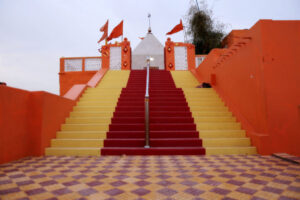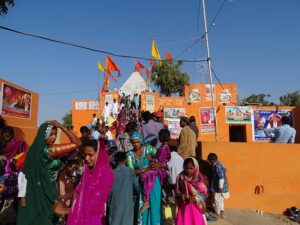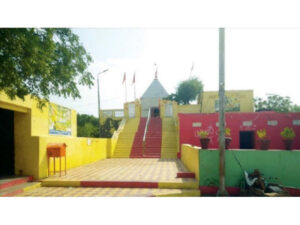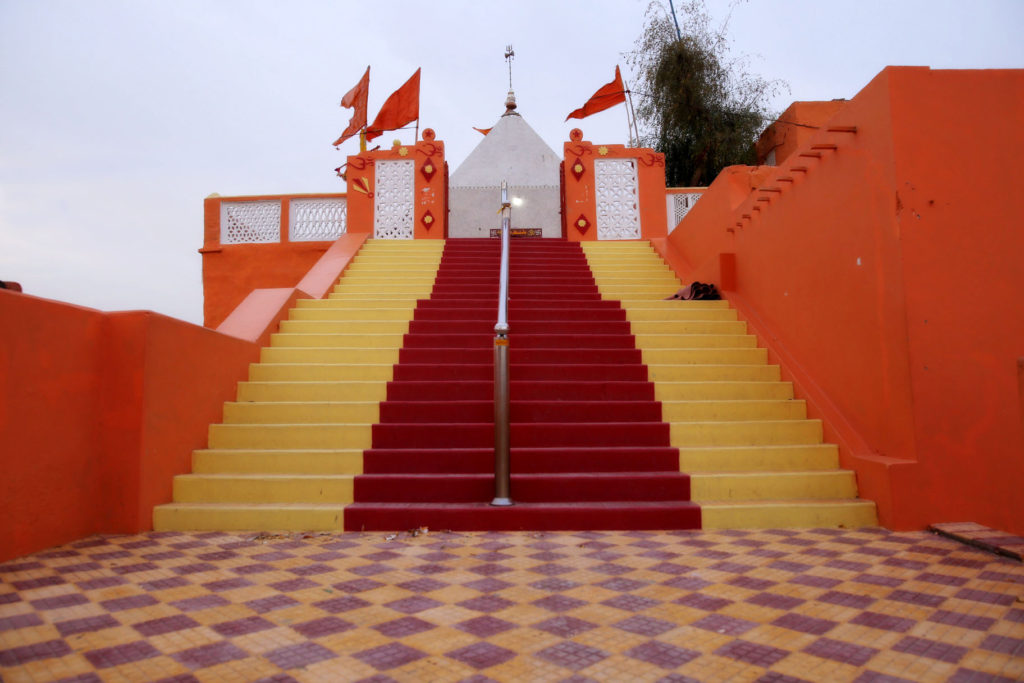Umarkot, Sindh — Nestled near Rana Jaageer Goth in the historic Umerkot District, the Umarkot Shiv Mandir—also known as the Amarkot Shiv Mandir—stands as one of the oldest and most revered Hindu temples in Sindh. Its sacred Shiva Lingam and the grandeur of its annual Maha Shivratri celebrations make it both a spiritual sanctuary and a symbol of Pakistan’s shared cultural heritage.
Introduction
Umerkot Shiv Temple: A Pillar of Heritage and Devotion in Sindh
At the heart of Umerkot, a city steeped in history, the Umerkot Shiv Temple has endured for centuries as a place of worship, peace, and cultural exchange. While Umerkot is known in broader history as the birthplace of Mughal Emperor Akbar, for Sindh’s Hindu community, this temple represents an even deeper continuity of faith—rooted in traditions that predate the Mughal era itself.
Historical Significance
A Legacy Rooted in Antiquity
The temple’s origins are shrouded in legend. Oral histories tell of a cowherd who noticed one of his cows wandering off daily to pour milk on a particular stone—later revealed to be a naturally manifested Shiva Lingam. Locals built a shrine around the sacred stone, which evolved over centuries into the temple we see today.
While its exact construction date is debated, historians suggest that the temple existed long before the 16th century. Over the years, it has been maintained not only by the Hindu community but also supported by members of other faiths, with one significant expansion funded by a Muslim benefactor roughly a century ago—a rare testament to interfaith respect in the region.
Architectural Features
A Blend of Simplicity and Spiritual Grandeur
The temple’s architecture reflects the distinctive Sindhi style—modest yet striking. A saffron-and-red tiled staircase leads to a sanctum crowned by a dome and flanked by a gracefully rising shikhara (spire). Inside, devotees encounter the ancient Shiva Lingam, surrounded by murals illustrating episodes from Hindu mythology.
The temple courtyard serves as both a meditative refuge and a social gathering place. During festivals, its walls reverberate with devotional songs, conch shells, and the rhythmic beat of dhols.
Religious and Cultural Importance
A Center for Pilgrimage and Celebration
For Sindh’s Hindu community, the Umerkot Shiv Temple is more than a sacred site—it is a cultural anchor. Each year, during Maha Shivratri, as many as 250,000 pilgrims converge from across Pakistan and even from abroad. Over three days, prayers, processions, devotional music, and communal feasts transform the temple into a vibrant spiritual hub.
Remarkably, the festival also draws participation from local Muslim villagers, who provide hospitality to pilgrims—an enduring symbol of Sindh’s inclusive traditions.
Preservation and Challenges
Safeguarding a Sacred Heritage
Like many ancient religious sites, the Umerkot Shiv Temple faces the twin threats of time and environmental wear. Local communities, with support from the All Hindu Panchayat and heritage conservationists, are working to maintain the structure and its surroundings. However, long-term preservation will require stronger governmental protection, especially as heritage tourism grows in Pakistan.
Given its historical value, some advocates have called for the temple’s inclusion under UNESCO World Heritage protection—placing it alongside other celebrated cultural landmarks in Sindh.
Visiting the Umerkot Shiv Temple
A Journey of Faith and Discovery
The temple remains open to all, regardless of faith. Visitors can expect to experience not only its spiritual atmosphere but also the warmth of the local community. For those interested in the broader history of Umerkot, the nearby Umerkot Fort and centuries-old bazaars add further depth to the journey.
Conclusion
The Umerkot Shiv Temple is more than an architectural relic—it is a living monument to resilience, faith, and harmony. Its festivals echo with centuries-old chants; its walls tell stories of devotion; its continued existence is a reminder that Pakistan’s cultural heritage is as diverse as it is profound.
Preserving this temple means preserving a chapter of Sindh’s shared history—one where faith has endured, and where harmony between communities is not just a memory, but a living tradition.









